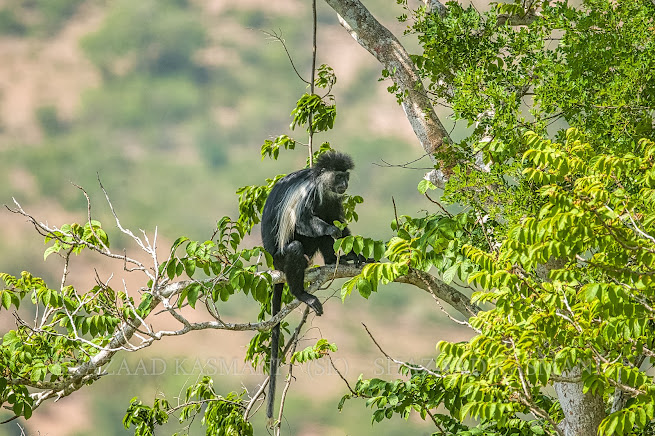Explore the lush forests of Shimba Hills and witness the elegance and agility of the colobus monkeys as they navigate the treetops, showcasing their unique adaptations and captivating behaviors.
In the verdant landscapes of Shimba Hills, an enchanting sight awaits—the graceful colobus monkeys. With their striking black and white fur, long limbs, and distinctive flowing tails, these arboreal acrobats captivate all who encounter them. Join us on a journey to discover the secrets of the colobus monkeys, their unique adaptations, social dynamics, and the remarkable role they play in the Shimba Hills ecosystem.
The colobus monkeys are known for their remarkable adaptation to life in the treetops. Their long limbs and agile bodies make them superb climbers, allowing them to effortlessly navigate the complex network of branches and vines. Their tails, which are longer than their bodies, provide balance and serve as a communication tool within the troop.
One of the most distinctive features of the colobus monkeys is their striking black and white fur. This coloration acts as camouflage amidst the dappled light of the forest canopy, helping them blend seamlessly with their surroundings. Additionally, their coloration serves as a form of communication within the troop, with different patterns and variations signifying individual identity and social status.
Colobus monkeys have a unique digestive system that enables them to thrive on a diet consisting primarily of leaves. Their specialized stomachs and gut flora allow them to extract nutrients from the fibrous vegetation, making them highly adapted to a folivorous lifestyle. This adaptation plays a crucial role in shaping the forest ecosystem, as they contribute to seed dispersal and nutrient cycling.
Social bonds are paramount within colobus monkey troops. These primates live in tight-knit groups, usually consisting of a dominant male, several females, and their offspring. Group members engage in grooming behaviors as a means of bonding and maintaining social cohesion. This intricate social structure ensures the well-being and survival of the troop as they navigate the challenges of the forest habitat.
As you explore the captivating world of colobus monkeys in Shimba Hills, you'll witness their acrobatic leaps and bounds through the treetops. Their agile movements and arboreal lifestyle highlight their remarkable adaptations to life in the canopy. Observing their behaviors and interactions provides a glimpse into the intricate dynamics of these fascinating creatures.
While visiting Shimba Hills, seize the opportunity to encounter the colobus monkeys in their natural habitat. Book a safari with Wild Kenya Safaris and visit www.wildkenyasafaris.com to embark on an extraordinary adventure that will bring you closer to the captivating world of colobus monkeys, leaving you in awe of their grace, agility, and the vital role they play in the Shimba Hills ecosystem.
#monkeys #shimbahills #wildkenyasafaris

Comments
Post a Comment